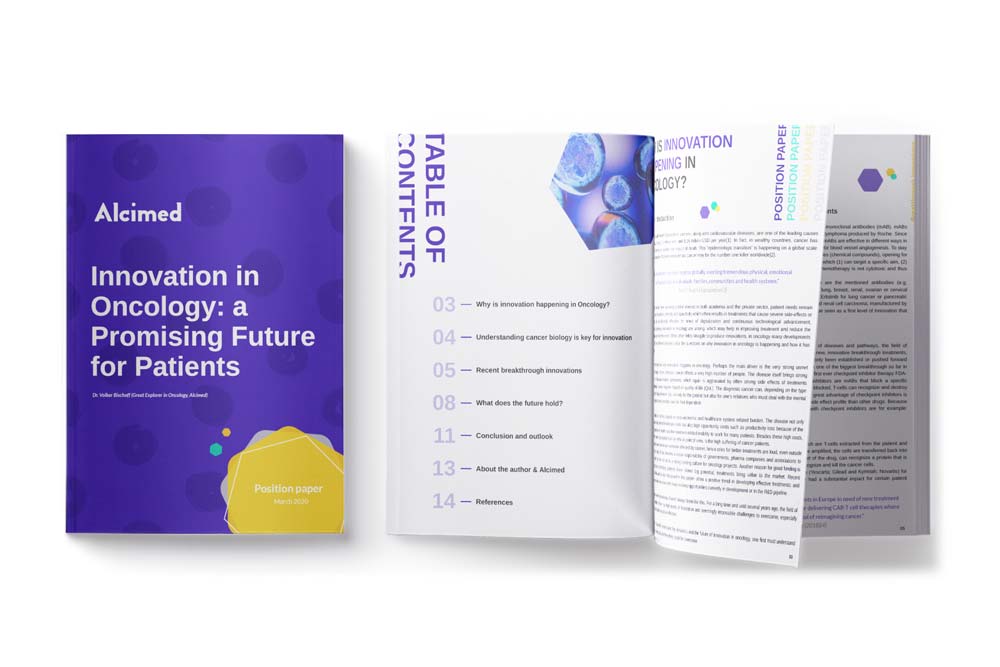Cancer is a highly complex disease and to date various treatments exist to fight against them: surgery, radiation, chemotherapy, targeted therapies, or immunotherapy. However, monotherapies are not always sufficient and combination of two or multiple treatments have been shown to be often more effective. In the recent years, a lot of effort has been put into combining various treatments to optimize cancer care. What is the benefit of using combinations of treatments? And how are these combinations used in oncology?
Combination treatments in oncology: 3 key advantages to increase the effectiveness of therapies
Combination treatments is a broad term and describes any type of combination of therapeutic interventions. The combination of two or multiple treatments can increase the efficacy of therapies compared to monotherapies for the following three reasons:
- Combining various therapies is thought to overcome or avoid/delay resistance against monotherapies, which is often the case in cancer treatment. Resistance to specific types of treatments can occur from the beginning of treatment or be acquired during treatment. The latter is known as adapted resistance and is often due to specific molecular variations within the tumor cells that make them insensitive to specific types of therapies.
- The combination of treatments can lead to additive or even synergistic effects. For example, two drugs targeting the same pathway or related pathways, could lead to an enhanced inhibition of a specific effect
- In the case of a synergistic effect of treatments, lower doses could potentially be applied to patients, which could again potentially lead to an overall less toxic effect on the patient.
To download our Position Paper
‘Innovation in Oncology: a Promising Future for Patients’
Combination treatments in the field of cancer immunotherapy
In the field of cancer immunotherapy much effort is put into combining different types of cancer immunotherapies and several clinical trials investigating the combination of these as well as cancer immunotherapy with other treatment types have been increasing in the last years. Alcimed highlights below a list of few examples of interesting treatment combinations in immunotherapy:
- Radiation therapy is thought to increase the treatment outcome of checkpoint inhibitors, only for local treatment, because radiation could sensitize tumor cells to immunotherapy. Therefore the combination of these treatments might have a synergistic effect.
- Several combinations of chemotherapy and immunotherapy are in trial.
One highlight described by the American Society for Clinical Oncology is the clinical trial called Impassion130, by Hoffmann-Roche, in which metastatic triple negative breast cancer patients who were positive for programmed cell death-ligand 1 immune cells (PD-L1 IC), had improved overall survival when treated with atezolizumab, a therapy targeting PD-L1, in combination with chemotherapy, compared to chemotherapy combined with placebo.
- A promising example of combination therapies is to combine drugs modifying the gut microbiome with cancer immunotherapies, and several trials go into this direction. The rational behind this type of combination is that the human gut microbiome has been suggested to have a significant role in a person’s susceptibility and how they respond to certain therapies, especially cancer immunotherapy, notably checkpoint inhibitors.
Beyond immunotherapy, other examples of combination treatments in oncology
- Radiation therapy is often performed in combination with other treatments like, surgery or chemotherapy, to optimize the reduction of cancer cells.
For example in breast cancer patients, a combination of surgery and radiation therapy is often applied. In this way the patient can undergo a lumpectomy (in which only the tumor and surrounding tissue are removed, to conserve the breasts) and radiation is performed to destroy potential tumor cells not removed by surgery.
- Targeted therapies, that act on specific molecular targets identified within the tumor, is often combined with chemotherapy. Several examples of this type of combination treatments in oncology were presented at ASCO 2020.
- In the end, systemic cancer therapies can be combined with digital therapeutics, which can suggest novel therapeutic options or enhance and optimize the treatment of the patient.
Recent developments in combination treatments are promising in oncology to improve the effectiveness of therapies. To go further on this topic, download our position paper INNOVATION IN ONCOLOGY: A PROMISING FUTURE FOR PATIENTS.
About the authors
Volker, Great Explorer Oncology in Alcimed’s Healthcare team in Germany
Jana, Consultant in Alcimed’s Healthcare team in Germany



